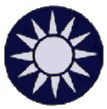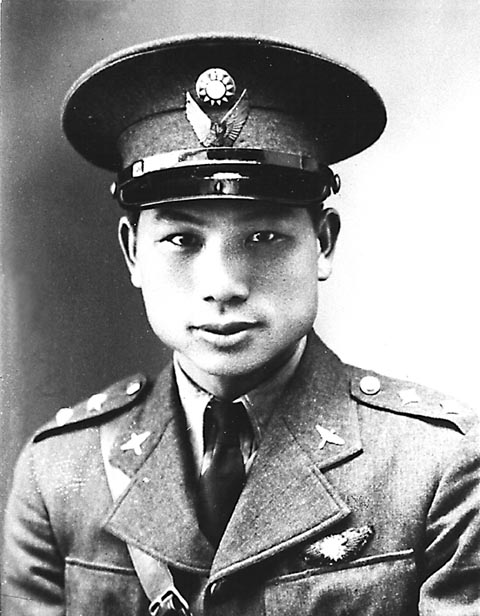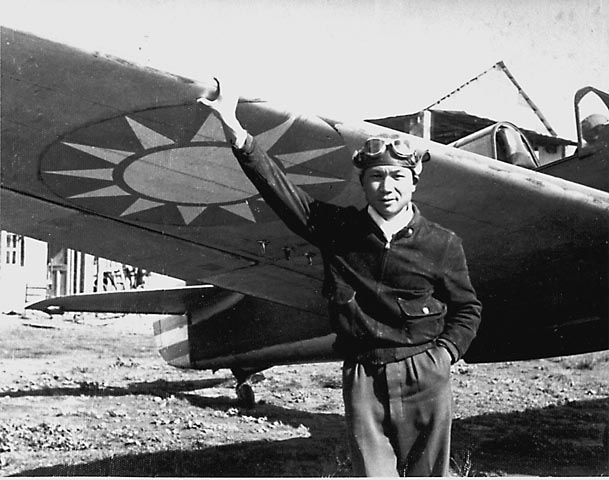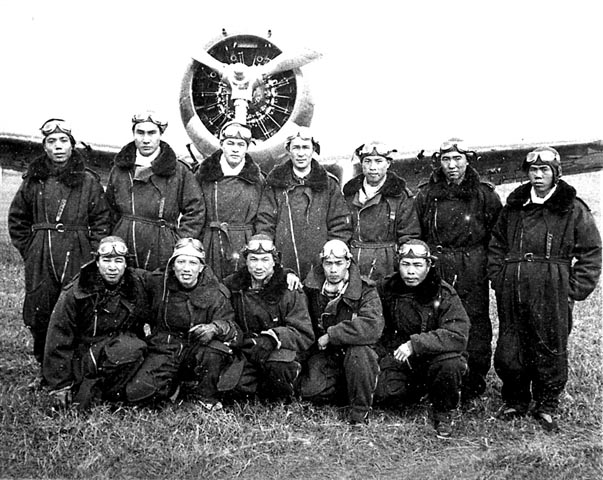
Lieutenant Colonel Yang Yibai (楊一白)

Lieutenant Colonel Yang Yibai (楊一白)

Yang Yibai in 1936
Image kindly provided by Donald Young
Yang Yibai was a graduate of the 3rd graduating class in 1930 from the Guangzhou Military Aviation School (better known as the Canton Aviation School established by Dr. Sun Yat-sen in Guangzhou, Guangdong Province in July 1924). Upon graduation he was stationed in Nanjing, the then National Capital of the Republic of China; he took part in the Chinese Central Plain War in May 1930, a campaign led by Kuomintang’s Chiang Kai-Shek to subjugate the combined regional forces within the Kuomintang Party opposing Chiang’s Central government in Nanjing.
After the re-organization of the China Air Force of Kuomintang’s Central Government in 1936 under Chiang Kai-Shek, Yang Yibai became the Squadron Commander of the 18th Reconnaissance and Bombing (R&B) Squadron with a rank of Major in July 1937. The Squadron was stationed at Tianhe Airfield in Guangzhou.
In December 1937, after the fall of Nanjing to the Japanese forces, the 18th Squadron was posted to Yichang, Hubei Province, and attached to the 8th BG to form a training school for Chinese bomber pilots using three Italian Savoia Marchetti SM.81B twin-engine medium bombers and one German Heinkel He 111A twin-engine medium bomber. The training flights were often disrupted by Japanese air attacks, and the school was disbanded in May 1938 after all three SM.81Bs were damaged in training accidents.
The 18th R&B Squadron was re-organized into the 18th PS in November 1938, receiving nine new Curtiss Hawk 75Ms, and began to train in Yibin, Sichuan Province.
In January 1939, the 18th PS was re-based to Kunming, Yunnan Province, while the training was continued.

Squadron Commander Yang Yibai and his Hawk 75M in Kunming in 1939
Image kindly provided by Donald Young

18th PS and Hawk 75M in Kunming, 1939. Squadron Commander Yang Yibai in the front centre
Image kindly provided by Donald Young
In April the 18th PS was part of a combined Pursuit Group under the Group Commander Hu Zhengyu, and took part in operations guarding Kunming areas against Japanese air raids.
Between May and August, 1939, the Squadron was re-stationed to Yibin and later to Chongqing and then returned to Kunming, assuming the duties for defence of Chongqing against Japanese night air raids.
On 18 December 1939, the Chinese armed forces launched a major counter-attack against the Japanese forces in the areas of Guilin and Nanning in south Guangxi Province. The counter-offensive, known as the Battle of South Guangxi, lasted through February 1940; the China Air Force provided air support with 115 aircraft from the 3rd, 4th and 5th Pursuit Groups, the 6th BG, the 18th PS and Soviet Squadrons. Yang Yibai took part in the Battle of South Guangxi; he was credited with destroying three Japanese aircraft and awarded a Class 3 medal.

The Air Force Award Certificate of the Class 3 medal to Yang Yibai.
The text states:
Air Force Award Certificates
To recognize his meritorious military service in defending his country, the air force commander, Yang Yibai, is rewarded a 3:rd degree medal by The Aviation Commission of Military Committee.
Chairman Chang Kai-shek
May, Year 32 of The Republic of China
Image kindly provided by Donald Young
From January to May 1940, the 18th PS remained being stationed in Kunming guarding the communications and transportation lines along the Kunming-Burma Road.
On 8 February, three Hawk 75Ms intercepted 27 Japanese planes on an air raid to Mengtze at 15:05. In the ensuing dogfights which lasted for more than an hour, Hawk 75M No. 5024 was shot up and damaged on landing, and its pilot Yang Tzu-Fan was injured.
In June 1940, Yang Yibai and his 18th PS returned to Chongqing.
The 18th PS was disbanded in January 1941. The surviving Hawk 75M were turned over to the 11th PG, and later transferred to the 3rd PG stationed in Chengdu, and by the beginning of 1942 they were no longer used in combat.
In the spring of 1941, he was sent to the Army Military University in Xian for a year to study army military tactics and to serve as an instructor on coordination and communications between army and air force units. He then returned to the China Air Force Headquarters in Chengdu to become the Commanding Officer in charge of one of the China Air Force flight schools newly set up in Xinjin near Chengdu to train young Chinese pilots. The flight school commenced its training in April 1942 using the Soviet I-15 and I-16 fighter planes. The training proved to be very difficult due to shortages of material supplies and ground personnel to maintain the old aircraft. He was nicknamed the “Caged Guest” by the student pilots, because he had to plead and scramble for material supplies for the School. Under extremely trying conditions the School completed training for two graduating classes totalling about 110 pilots, before it was disbanded in 1943. Young air cadets from the China Air Force were later sent to the U.S. to train.
In January 1944 he became a Lieutenant Colonel, and was posted to the Interpretation Wing (military intelligence) of the China Aviation Committee in Guangyangba, Sichuan Province, and remained at the Interpretation Wing until it was disbanded in June 1945 just before the end of the Sino-Japanese War.
In July 1945, he joined as a pilot the Central Air Transport Corporation (CATC), a Chinese airline newly formed in 1943. The CATC was jointly owned by the Chinese government and Chinese citizens. It was the successor of Eurasia Aviation Corporation, a Sino-German airline founded in 1930 under a 10-year agreement between Lufthansa and the Chinese government. In September 1940, when Japan joined the alliance of the Nazi Germany Axis, the agreement was dissolved, and the Chinese government took over the assets of Eurasia, renaming it CATC. He was with the CATC as a pilot until 1949, and stayed in Hong Kong in 1949 when the Republic of China moved its National Capital from Nanjing to Taiwan. Shortly afterward he immigrated to the U.S.
Sources:
Information kindly provided by Donald Young.
Translation kindly provided by Liya Sang.

